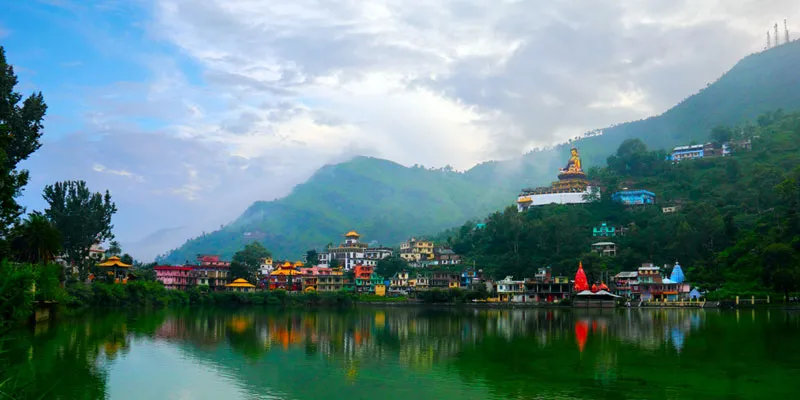Healthier living possible in India's green villages
In this series, Sramana Mitra shares chapters from her book Vision India 2020, that outlines 45 interesting ideas for start-up companies with the potential to become billion-dollar enterprises. These articles are written as business fiction, as if we’re in 2020, reflecting back on building these businesses over the previous decade. We hope to spark ideas for building successful start-ups of your own.
India’s real estate development during the late twentieth century and early twenty-first century had consisted of multi-story residential and commercial buildings rising above the urban setting. In parallel, the ever-increasing flow of inhabitants from rural to urban India in search of a livelihood and a better life brought with it a near breaking point of taxis and cars, scooters, buses, rickshaws, bicycles, and pedestrians, more often at a standstill than in transit. Indian cities were bursting at the seams; getting to and from work had become a tremendous challenge. The country was advancing, but towards what?

We founded Green Village, a real estate development company with a commitment to green buildings and green lifestyles, in 2008.
Among our most fundamental assumptions was that people should work within walking or cycling distance of where they live. Whether in urban or rural settings, this basic assumption led us to design real estate from a new perspective – one that sought to unite the working and living space.
In urban settings, where land was expensive and building had to be mainly vertical, we built multi-story towers with residency spliced 75% residential, 25% commercial. We offered a wide variation of styles and size in our residential spaces to accommodate the different levels of professionals, from entry-level to executive.
In rural or small-town settings, we created carbon-free campuses dominated by sprawling pedestrian areas. The campuses, again, had both residential and commercial accommodations in multiple sizes and tiers. At eight thirty in the morning, erstwhile rush hours started looking like relaxed Sunday mornings in the park, with bicycles and cycle-rickshaws fast becoming the preferred modes of transportation on campus.
In all our projects, our architects and engineers designed around a renewable energy- based lifestyle. An aerial view of a Green Village campus, thus, showed our bustling community members moving among solar-paneled roofs over hundreds of low-rise houses. On our urban projects, these solar panels graced the rooftops of high-rise apartments, and balcony-hung solar water heater systems captured another arm of this abundant natural resource.
Among our rural customers were Maya Ray, the fast-growing rural BPO, the healthcare companies Doctor on Wire and Doctor at Hand, as well as Urja and Oishi, two artisan-focused fashion and lifestyle brands that were gaining international traction. Our urban customers included numerous IT and ITES companies, as well as financial services firms.
With HDFC we created excellent financing programs such that companies could offer some of their employees the opportunity to buy their own apartment, house, or bungalow, thereby generating loyalty for generations to come. Think about it – you don’t have to drive to work, and your employer is offering to help you buy a place in the same building or campus that you work in – what better possibilities are there?
While the urban effort ramped to a few hundred projects, we increasingly focused on our rural opportunities. For the opportunity for creativity in landscaping was much greater: sprawling space, trees, lakes, fields, and orchards, and the quality of life we were able to provide was orders of magnitude better. Part of the package in some campuses were community kitchen gardens supplying fresh, organic tomatoes, cauliflower, eggplants, chilies, and myriad other seasonal attractions.
About five years into our growing history, we began collaborating with large companies like Infosys, Wipro, Tata, Reliance, IBM, GE, and TI to expand our rural campuses, housing thousands of people. Built as clusters of residential units, these campuses each had a commercial unit where residents worked. In collaboration with our new partners, both commercial and residential facilities were, needless to say, fully connected with reliable broadband service, Wi-Fi, and cable; all commercial units were equipped with telepresence systems for high-resolution video conferencing; and soon enough the campuses were also connected by Magic Carpet Roads and Lightning Rails to the urban centers.
We also paid close attention to lifestyle in these campuses, inviting retail and restaurant entrepreneurs to enhance the environment. Soon, campuses sported custom tailoring shops, ready-to-wear boutiques, and home furnishing and furniture stores. On another end, concentrations of fishmongers, grocers, and butchers amassed. The campuses also quickly developed daycare facilities, laundromats, hair and beauty salons, health clubs, meditation centers – all the necessary amenities for a healthy, balanced lifestyle. And for entertainment, the pallet included movie theaters, dance clubs, and concert halls. Soon the niche categories of service emerged as well, whereby small entrepreneurs took up all the grocery shopping for campus inhabitants, taking orders online and delivering merchandise to their clientele on a daily basis. Another crucial category of service grew around delivering fresh-cooked food, which was important because in twenty-first-century India, many of the families that lived and worked in these campuses were dual-career households.
India Today did a profile on Green Village in January 2018 where they wrote, “Green Village is in the business of building twenty-first-century corporate villages. How else do you describe the lifestyles of hundreds and thousands of people who walk to work, go home for a nap in the afternoon, videoconference with Texas in the evening, and garden with colleagues on weekends?”
By 2020, we have built a few thousand such villages, completely shifting the dynamic of India’s development from a concentrated, urbanized phenomenon to one distributed and sustainable, offering a revolutionary stress-free lifestyle for our inhabitants.
Image Credit "ShutterStock"







